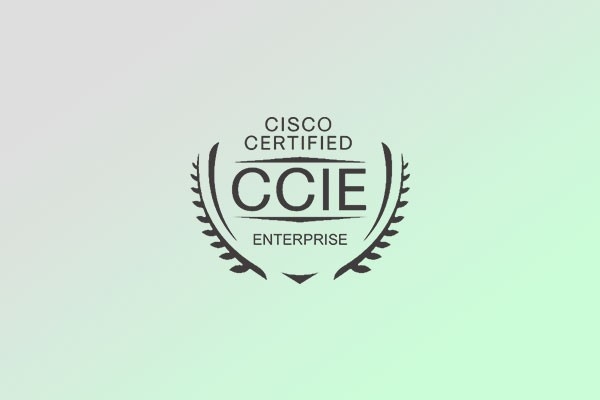In the fast-paced world of information technology, certifications play a pivotal role in demonstrating expertise and advancing careers. Among the many certifications available, the Cisco Certified Internetwork Expert (CCIE) stands out as one of the most prestigious and sought-after credentials in the networking industry. But for beginners, understanding the intricacies of the CCIE certification can be daunting. In this comprehensive guide, we'll break down the CCIE certification, providing essential insights and guidance for aspiring candidates.
Understanding the CCIE Certification
The CCIE certification, offered by Cisco Systems, validates expert-level skills in designing, implementing, managing, and troubleshooting complex networking infrastructures. It is widely recognized as a benchmark for network engineering excellence and is highly regarded by employers worldwide.
Prerequisites
Before diving into the CCIE journey, it's essential to understand the prerequisites. While there are no formal prerequisites for attempting the CCIE exam, Cisco recommends having several years of experience in networking, as well as a solid understanding of networking concepts and technologies covered in the exam blueprint.
Exam Tracks
The CCIE certification offers various tracks, each focusing on different aspects of networking technology. As of the latest update, the available tracks include:
-
CCIE Enterprise Infrastructure: This track focuses on designing, deploying, operating, and optimizing complex enterprise networking solutions.
-
CCIE Enterprise Wireless: It emphasizes advanced knowledge of wireless networking principles, including design, implementation, operation, and troubleshooting.
-
CCIE Data Center: This track covers data center networking technologies, including design, implementation, troubleshooting, and optimization.
-
CCIE Security: It validates expertise in designing, implementing, and managing end-to-end security solutions.
-
CCIE Service Provider: This track focuses on service provider technologies, including core infrastructure, services, and automation.
-
CCIE Collaboration: It covers collaboration technologies such as voice, video, and messaging solutions.
The Exam Process
The CCIE certification process involves two main stages: a written exam and a hands-on lab exam.
Written Exam
The journey typically begins with the written exam, which tests theoretical knowledge across a broad range of networking topics. The written exam serves as a prerequisite for the lab exam and must be passed before attempting the lab.
Lab Exam
Once the written exam is successfully cleared, candidates can schedule the lab exam. Unlike the written exam, which is conducted in a proctored environment, the lab exam is an eight-hour hands-on practical test that evaluates candidates' ability to configure, troubleshoot, and optimize network infrastructure in a simulated environment.
Preparation Tips
Preparing for the CCIE certification requires dedication, hard work, and strategic planning. Here are some tips to help beginners kickstart their preparation journey:
-
Understand the Blueprint: Familiarize yourself with the exam blueprint, which outlines the topics and technologies covered in the exam. Focus your study efforts on areas where you feel less confident.
-
Hands-on Practice: Invest in building a lab environment where you can practice configuring and troubleshooting networking devices. Practical experience is crucial for success in the CCIE lab exam.
-
Study Resources: Utilize a variety of study resources, including Cisco's official documentation, books, online courses, and practice exams. Join study groups or online forums to engage with fellow candidates and share knowledge.
-
Time Management: Create a study schedule that allows you to cover all exam topics systematically. Allocate dedicated time for both theoretical study and hands-on practice.
-
Mock Lab Exams: As the lab exam approaches, attempt mock lab exams to simulate the real exam environment. Practice time management and troubleshooting techniques to build confidence.
-
Review and Refine: Continuously review your progress and identify areas for improvement. Refine your study plan based on feedback from practice exams and simulations.
The Importance of CCIE Certification
Earning the CCIE certification can open doors to exciting career opportunities and higher earning potential. Here's why it's worth pursuing:
-
Industry Recognition: The CCIE certification is globally recognized as a symbol of networking expertise. It demonstrates to employers that you possess the skills and knowledge required to excel in complex networking environments.
-
Career Advancement: CCIE-certified professionals are in high demand across various industries, including telecommunications, finance, healthcare, and technology. Holding a CCIE certification can fast-track your career progression and lead to senior-level roles.
-
Salary Potential: CCIE-certified professionals command lucrative salaries, thanks to their specialized skill set and high demand in the job market. According to industry reports, CCIE-certified individuals often earn significantly higher salaries compared to their non-certified counterparts.
-
Continuous Learning: The CCIE certification is not just a one-time achievement but a commitment to lifelong learning. Cisco regularly updates its certification tracks to reflect the latest trends and technologies in networking, ensuring that CCIE-certified professionals stay relevant and up-to-date.
Conclusion
The CCIE certification is a challenging but rewarding journey that can propel your networking career to new heights. By understanding the exam process, preparing diligently, and leveraging available resources, beginners can set themselves up for success in the world of networking. Whether you aspire to become a network engineer, architect, or consultant, earning the CCIE certification can open doors to exciting opportunities and establish you as a trusted expert in the field. So, roll up your sleeves, dive into the world of networking, and embark on your CCIE journey today!


